The Beginner’s Guide to Local SEO
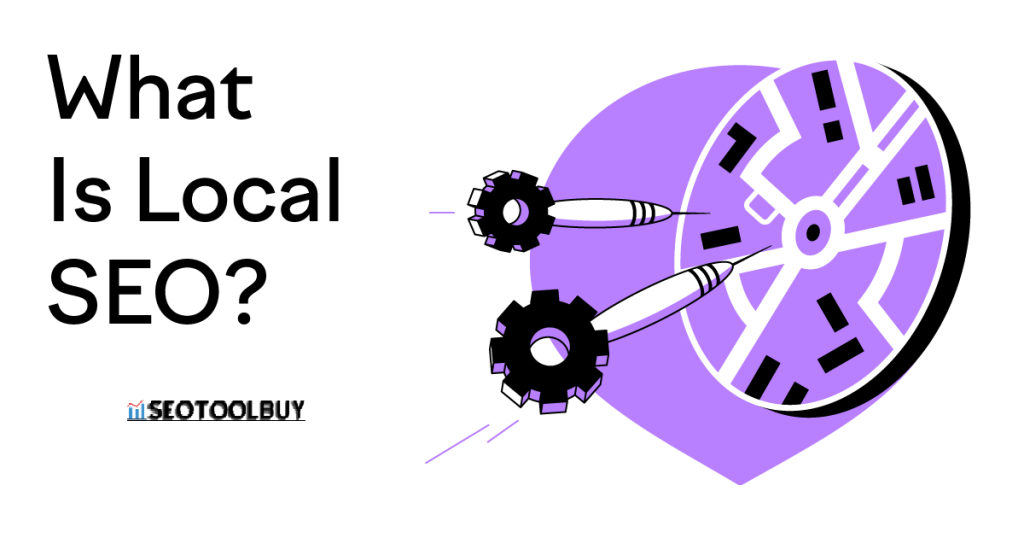
What Is Local SEO?
Local SEO is the process of optimizing your online presence to increase local traffic, visibility, and brand awareness.
Common tasks include:
- Optimizing your Google Business profile
- Finding local keywords
- Creating locally relevant content.
Any business that has a physical location or serves a geographic area can benefit from local SEO.
Here’s what a local search result looks like on Google:
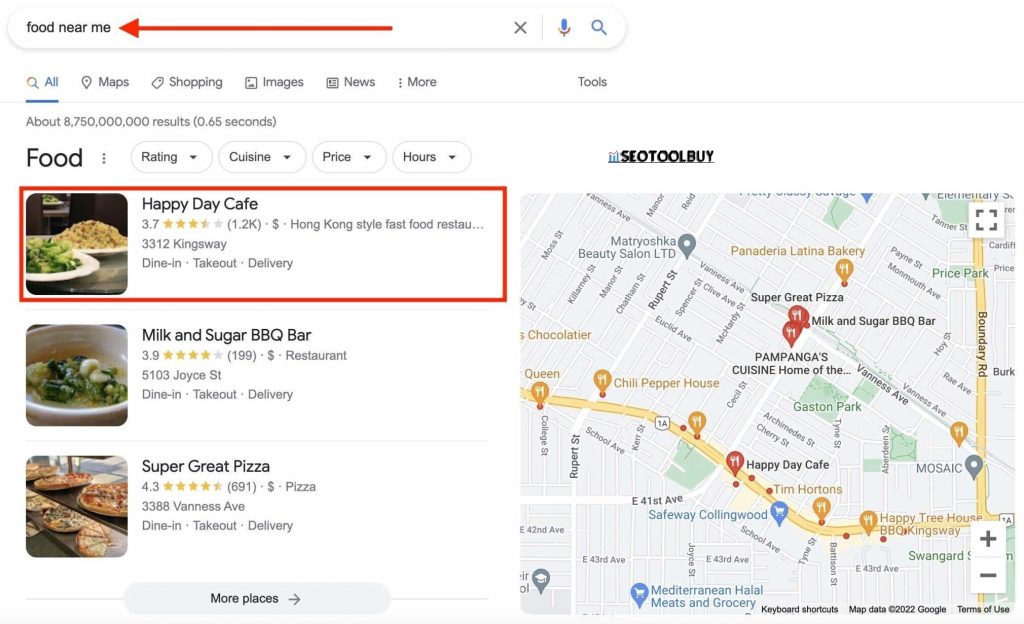
In fact, more than 30% of Google searches are related to location. That’s billions of searches every day.
The best way to get your local business in front of these search results is to use local SEO.
Read this guide to local SEO to learn how.
How Local SEO Works
On top of Google’s usual ranking factors, its local search algorithm uses three factors to help find the best match:
- Relevance (how closely related a result is to the words a searcher uses in their query)
- Distance (how far Google believes a user is to a business when they search)
- Prominence (how important Google thinks a business is to its competitors)
Then, Google displays two types of search results for local searches.
The “local pack” results (Google Maps and Business Profiles) and organic results.
Organic results are the “normal” blue link search results we’re all used to seeing on Google.
A local pack (or map pack) is a Google feature that shows the top local business listings and a map.
Like this:
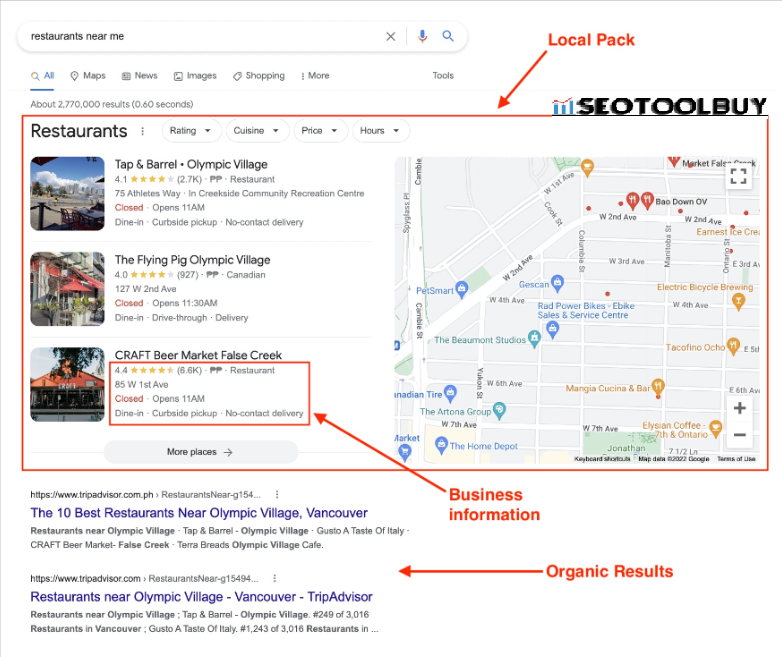
For example, when you search for “nutritionist miami,” Google displays a local pack at the very top of the results.
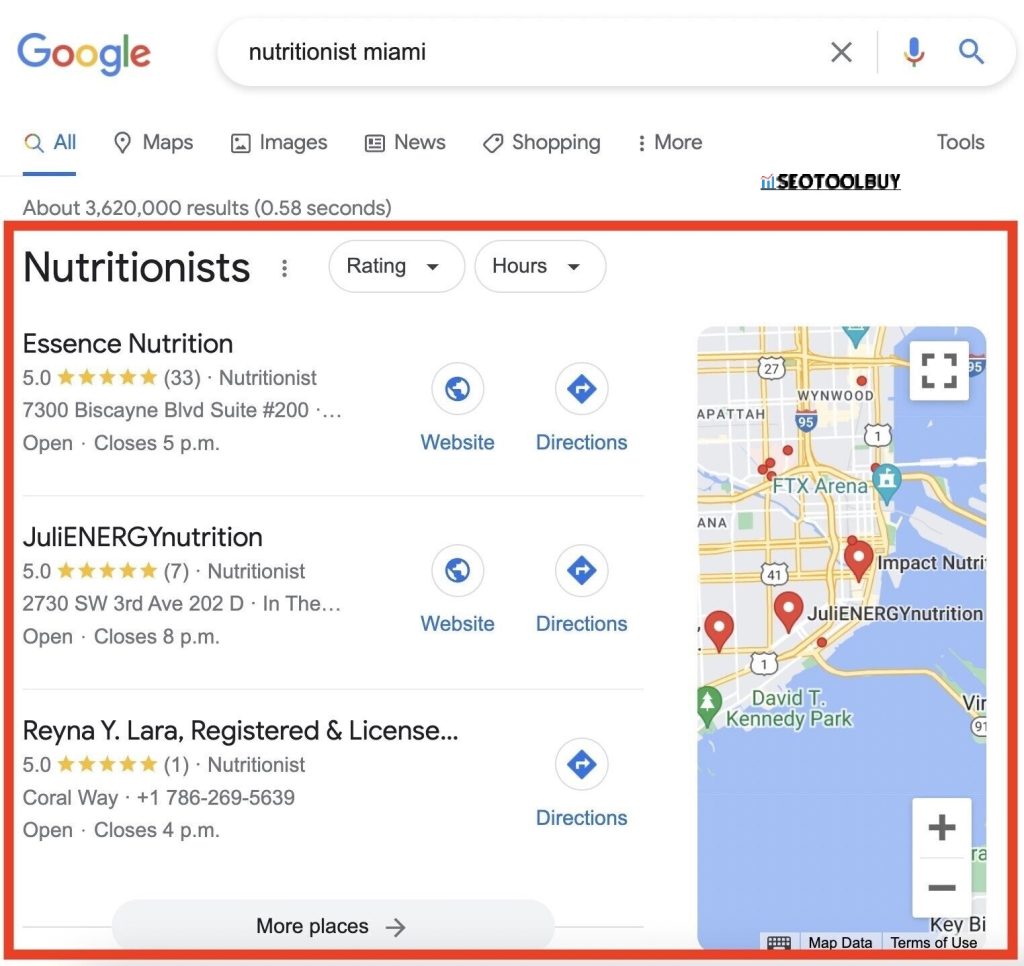
With the “regular” organic search results underneath.
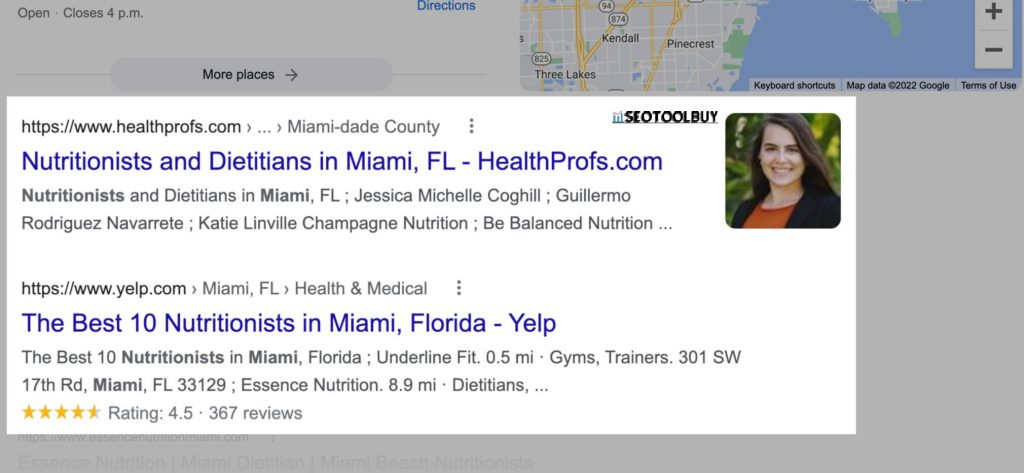
But Google doesn’t just show local results for queries that contain a specific city, state, or “near me” keyword.
If Google believes the intent of your search is local, it’ll display local results.
Even if the keyword isn’t explicitly local.
For example, if you were in Los Angeles and searched for “barber shops,” Google would still display a local pack for Los Angeles barber shops.
Like this:
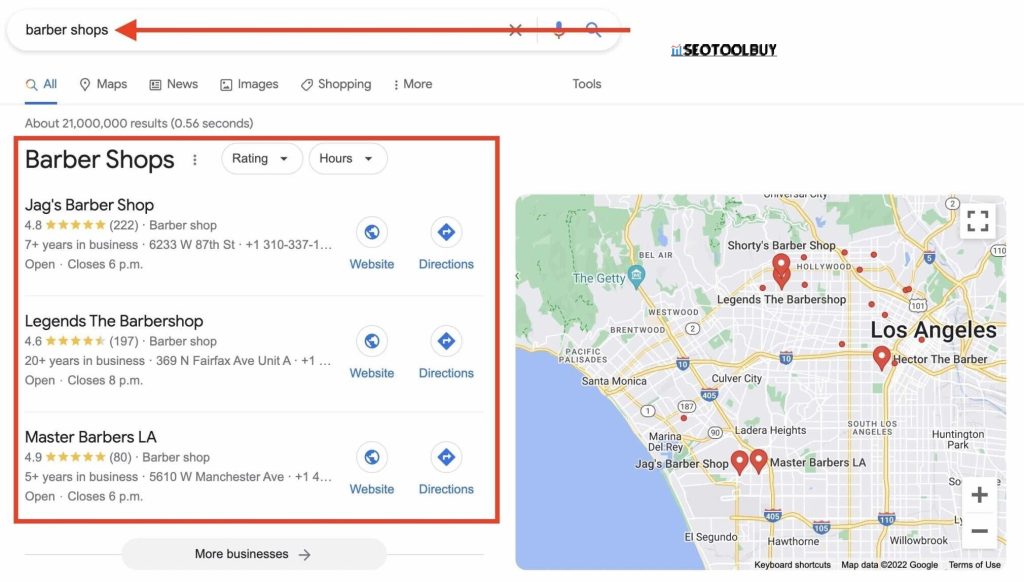
How To Find Keywords for Local SEO
Keyword research for local SEO is the process of finding keywords that people use when searching for local products and services.
Ranking for these keywords drives highly-targeted local traffic to your site and sends more customers your way.
To get started, you need a short list of keywords that people can use to find your local business.
Here are a few different ways to start.
Research Your Competitors
Seeing what your competitors are doing is an easy way to start gathering ideas.
One of the best ways to do that is to use a tool like Semrush’s Organic Research tool.
Just enter a competing site into the input, and click Search.
Like so:
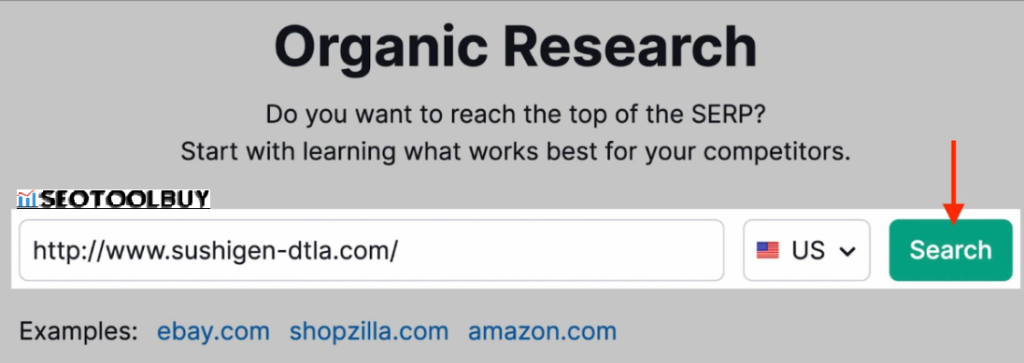
Then, go to the “Positions” tab.
Click on “Advanced filters,” and exclude branded keywords (phrases that contain your competitor’s business name).
And sort the table by keyword difficulty.
Now you have a list of keywords to target that you might’ve previously missed.
Quickly skim through and add any that are relevant to your initial list.
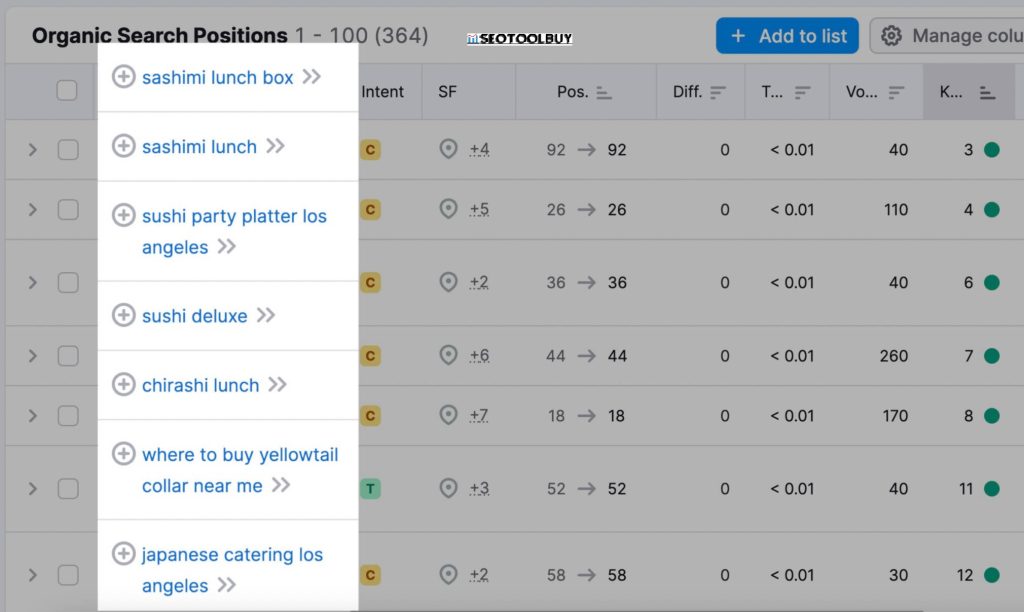
If your competitors are targeting these keywords, then they’re likely highly relevant to your business too.
Use Google Autocomplete
Google autocomplete is a feature within Google Search that makes it faster to complete searches when you start to type.
Its purpose is to save users time by predicting what they’re going to search for.
And it can also help you discover valuable long-tail keywords for local SEO.
That’s because Google autocomplete’s predictions depend partly on your location.
For example, if you’re in Arcadia, California, and you type “best paella in” into the search bar, you’ll see something like this:
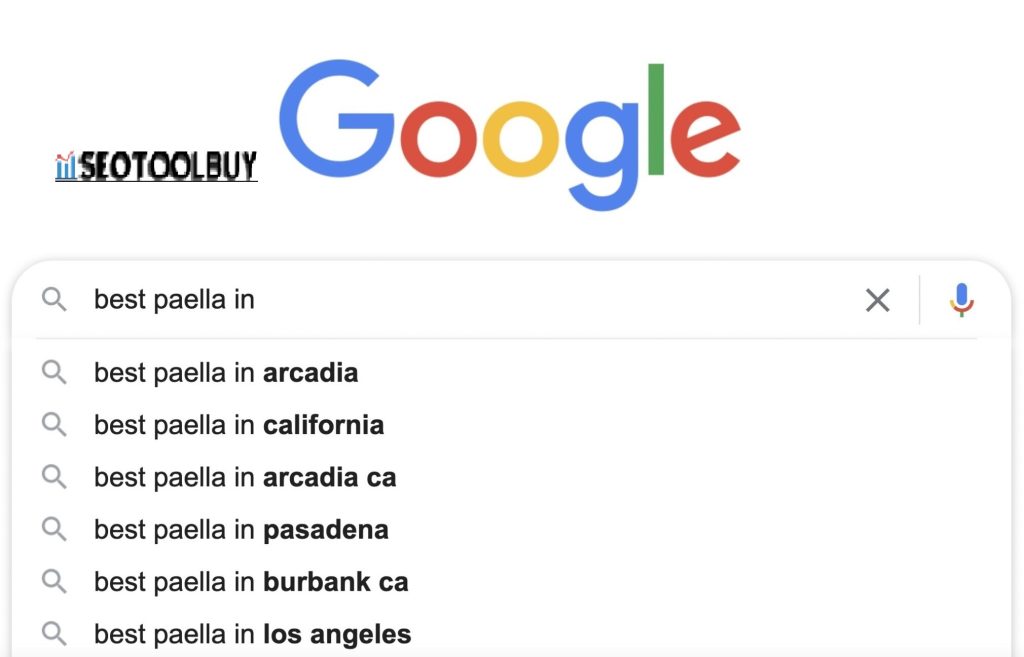
All these locations are near Arcadia or in California.
So, to find valuable local keywords, start typing in keywords related to your business.
For example, if you run a cleaning services business, type in “cleaning services” to get a list of local keyword suggestions.
Like this:
And when you start adding local modifiers like “cleaning services los angeles,” you start to see lots of other useful keywords.
Like this:
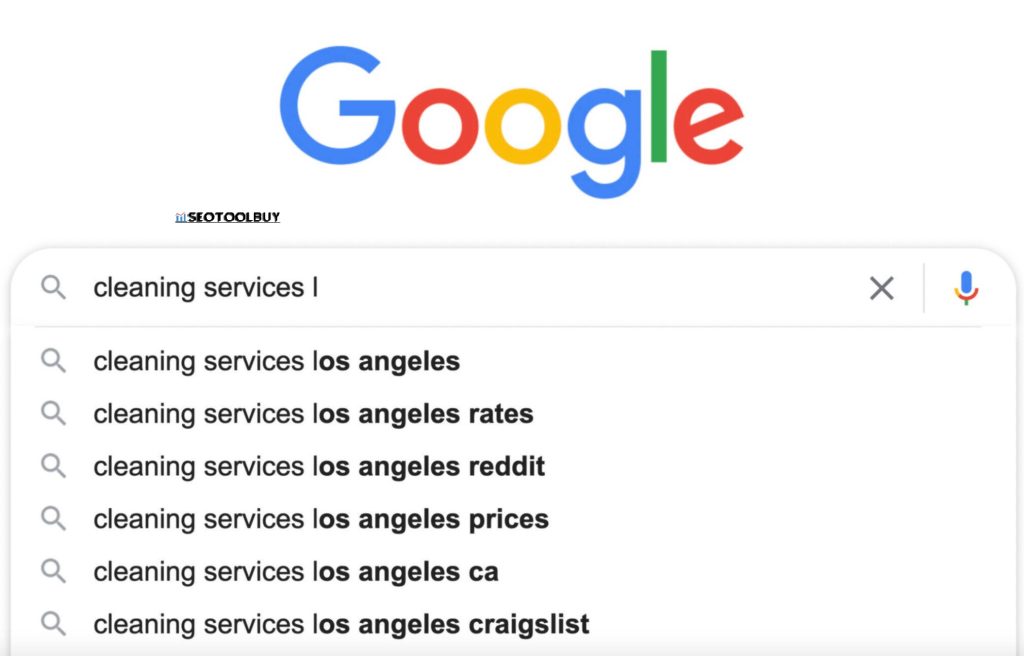
Keep trying new combinations of different local keywords and terms. You should have a list of keywords for your local business in no time.
Leverage Google Keyword Planner
Google’s Keyword Planner helps research keywords for paid search campaigns.
But it’s also great for discovering new keywords related to your business.
Start by going to the “Discover new keywords” section and click on the “Start with a website” tab.

Then, enter the domain of one of your competitors. Click “Get results,” and Google will suggest a ton of keywords based on the terms that appear on that page.
Repeat the process with three of your top competitors and add all the relevant keywords to your list.
Another great feature of Keyword Planner is that it gives search volume data for specific geographic areas.
Like so:

This feature is really helpful when you already have lots of keywords and want to pick which ones to target first.
If you’d like to learn how to do local SEO keyword research step by step, read our detailed article.
How To Optimize Your Business for Local SEO
Let’s explore the most important Google local search ranking factors and a few tips on how you can optimize for them.
Google Business Profile
A Google Business Profile (formerly Google My Business) is a free business listing with information about your business.
It allows you to provide details like your location, services, products, and photos.
Then, Google will list it in local search results.
For example, this is what it can look like for someone on a mobile device.
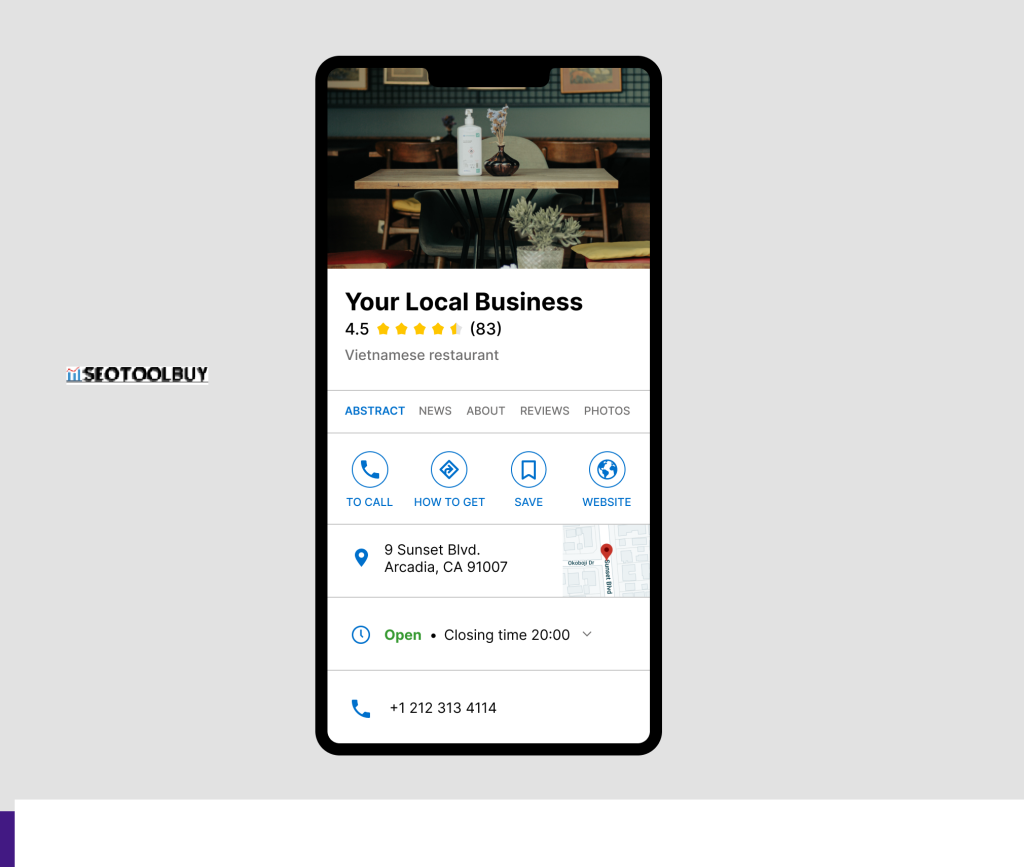
According to Google, optimizing your Business Profile is the most important local SEO ranking factor.
You need a Google Business Profile if you want to stand any chance of ranking on the local pack.
Here are a few Business Profile tips:
- Set detailed business hours (including holidays)
- Select various attributes to describe your business (like outdoor seating, wifi, etc.)
- Upload photos and videos regularly (promotes engagement and boosts rankings)
If you want to learn more about setting up and optimizing your Business Profile, read our guide.
Name, Address, & Phone Number (NAP) Citations
NAP citations are places online where your name, address, and phone number (NAP) are listed.
They usually appear on business directories and social media profiles.
NAPs are important because Google uses these citations to confirm that all your business information is accurate.
Like this:

The more Google sees a NAP citation for your business, the more confident it is that your address is where you say it is and that your phone number is what you say it is.
So, you want to get consistent NAP citations on as many reputable websites as you can.
An easy way to check your local listings and distribute them to directories worldwide is to use Semrush’s Listing Management tool.
To get started, open up the tool and enter your company name.

You’ll see a report of your current online presence. Including the total number of listings, listings to fix, and average star rating.

The tool shows a list of the most important directories, as well as your status in their listing:
- Present (your business is listed, the data is correct, and no further action is needed)
- With issues (your business is listed, but the data is incorrect)
- Not present (your business isn’t listed, and you’re missing out on potential customers)
- Unavailable (the directory doesn’t currently support your business category)

You can also download all of this information using the “Export” button in the top right corner.
Like this:

If you have a paid subscription, you can automatically distribute your business information to all directories.
First, make sure your listing is up to date.
And if you need to change anything, click the “Edit info” button.
Then, you can add additional information like photos, videos, Google Business Profile, and social media handles.

Following that, you’ll see a dashboard with seven tabs:
- Your listings (a table view of all your listings and their current status)
- Google Ads (launch and track ad campaigns right from inside the tool)
- Duplicates (see all possible, processed, or removed duplicate listings)
- User Suggestions (where you can approve or reject customer-suggested changes)
- Reviews (monitor reviews and ratings from different sources for all your locations)
- Local Rankings (see how well your business ranks for any city location)
- Heatmap (track keywords on a hyper-local level with rankings around your local area)
It looks like this:

Make sure all your information is updated and as detailed as possible.
Then, let the tool carry the heavy load of automatically keeping your NAP citations consistent everywhere.
Here are a few NAP citation tips:
- Keep your citations everywhere 100% consistent (same name, address, phone number)
- Submit your information to popular directories in your local area and industry
- Submit to big players (like Apple Maps, Yelp, Bing Places, Facebook, etc.)
Online Reviews
Reviews and testimonials build customer trust.
They provide social proof, validate your expertise, and give potential buyers confidence in your business.
Over 75% of consumers regularly read reviews and consider them to be essential.
Plus, Google recommends replying to reviews to show that you value your customers’s business and feedback.
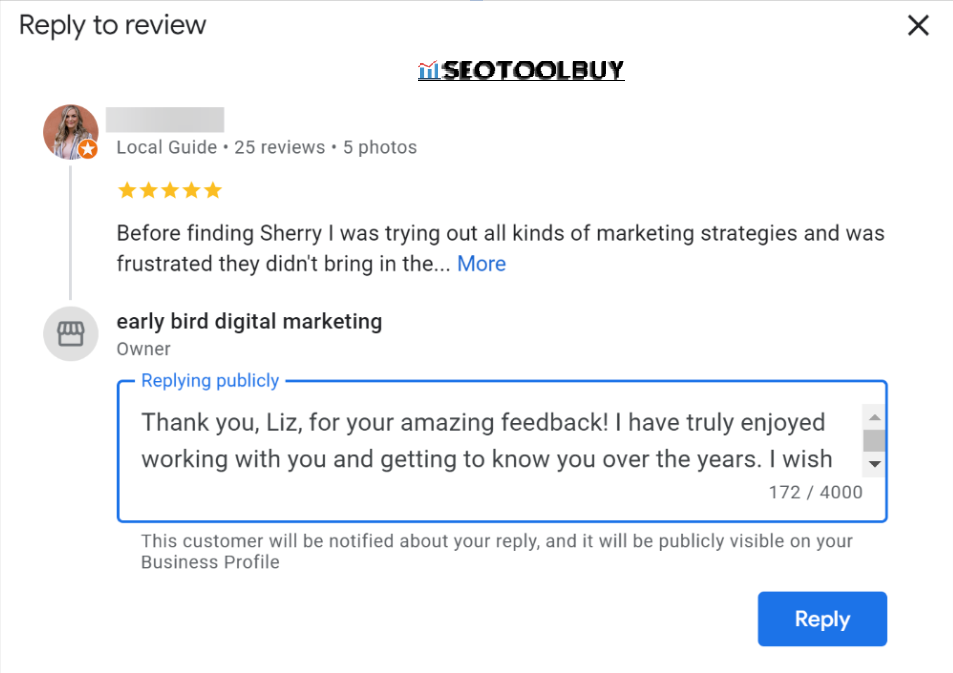
So, to find reviews to reply to, you can use the Listing Management tool.
To do so, just click on the “Reviews” tab.
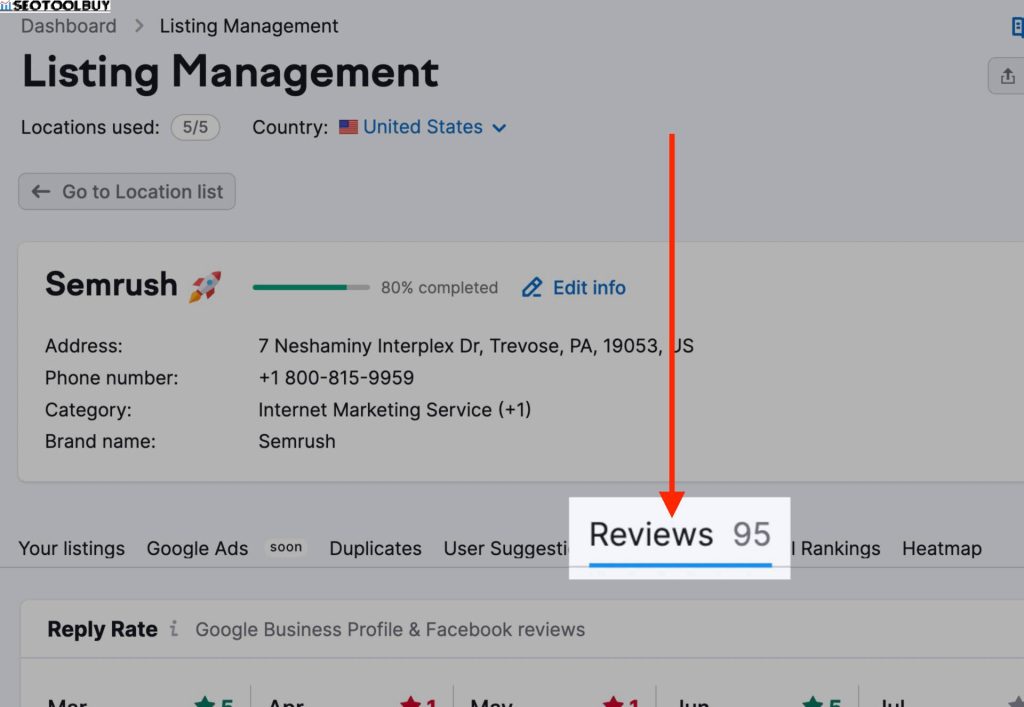
You can read any review right from the tool.
To do so, enter your comment in the tab and then hit the “Reply” button.
You can also choose to sort by newest, oldest, highest rating, or lowest rating by toggling the drop-down at the top of the “Reviews” table.
Like this:
Here are a few more online reviews tips:
- Verify your Business Profile (to respond to a review, you must have a verified business)
- Remind customers to leave reviews (you can create and share a link in Google Business Profile)
- Don’t offer or accept money in exchange for reviews (against Google’s terms)
On-Page SEO
On-page SEO is the practice of optimizing a page’s content to help it rank higher on organic search results.
And it’s indispensable for local SEO.
The higher you rank in the organic results, the higher your chances of ranking in the local pack.
To run a quick audit and gauge your on-page SEO health, you can use Semrush’s On-Page SEO Checker.
Enter your domain, hit “Get ideas,” and the tool will automatically start running an audit.

After a few minutes, it’ll display a dashboard with different on-page ideas for you to optimize.
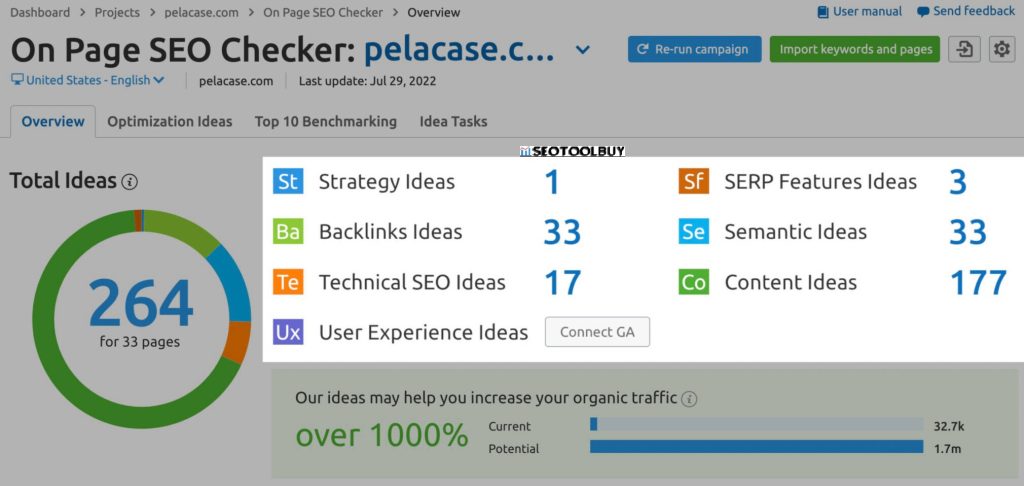
If you scroll down, you’ll see your pages are conveniently sorted by “priority.”
These are pages that have the greatest possibility of ranking on Google’s first page.
Optimize these pages first to get the most impactful results.
Now you can use what you found in your keyword research to create content and optimize existing content.
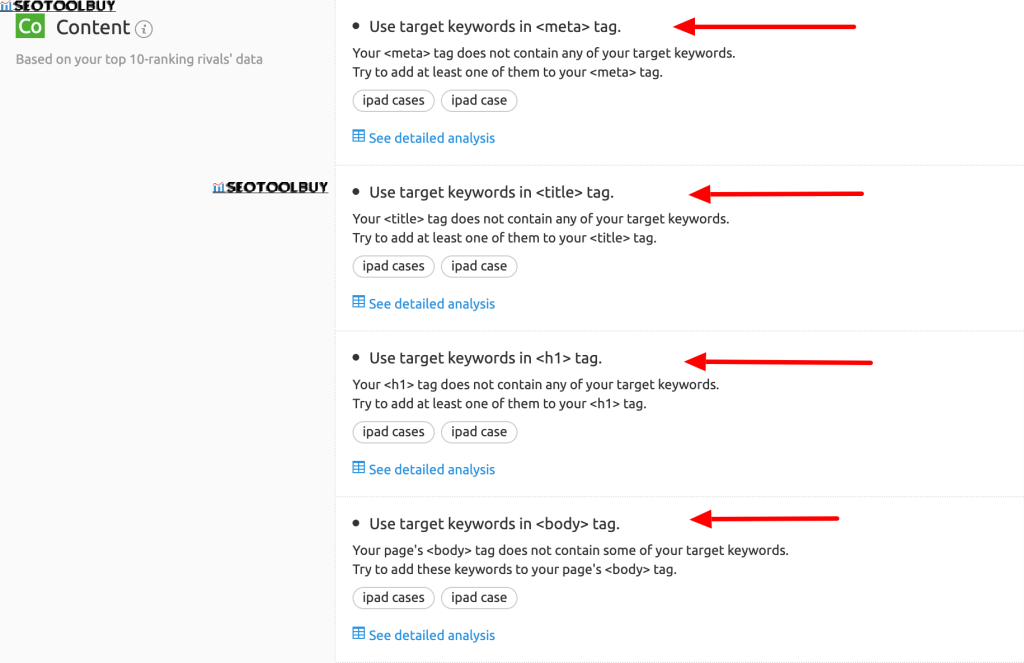
Here are a few on-page SEO tips:
- Include your locally targeted keywords in page titles and meta descriptions
- Add specific location pages to your website to emphasize your local services
- Internally link to and from pages where relevant
Backlinks
Backlinks are links on other sites that link back to yours.
They’re one of the strongest ranking signals in Google’s search algorithm.
Our study of over 600,000 keywords and ranking positions confirms the correlation between referring domains and ranking position.
Referring domains are websites that have one or more links to yours.
The more referring domains you have, the more likely you are to rank higher.
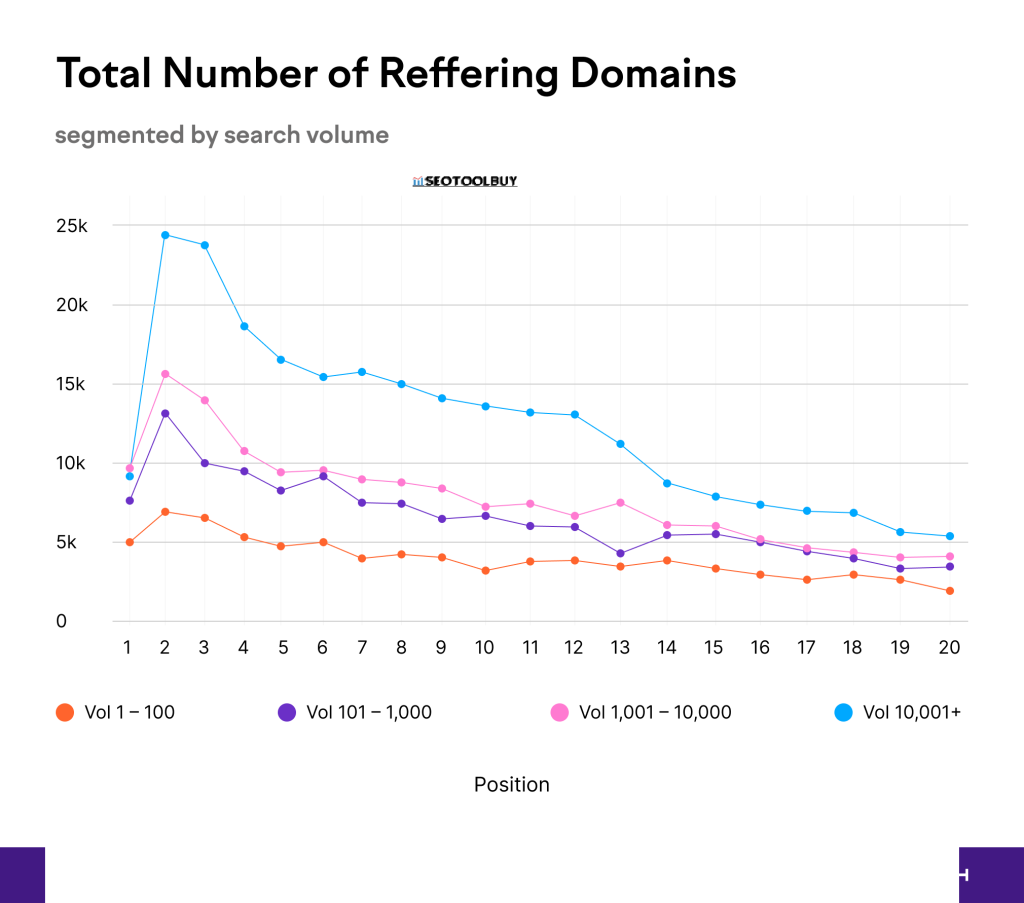
And the good news is that traditional link-building strategies also work for local link building.
There are lots of unique opportunities local businesses can make use of.
Here are a few local link-building tips:
- Reach out to other local (non-competitor) businesses for links
- Contact your local newspapers and sites to share stories
- Support and sponsor local events
Local SEO Tools
Here are a few local SEO tools that are helpful to keep your business consistently in front of your target audience.
Google Search Console
Google Search Console is a free tool that helps monitor, maintain, and fine-tune your site’s presence in search results. It’s a great tool to understand how Google sees your pages and ensure your site is crawlable.
Semrush’s Listing Management
Listing Management is Semrush’s all-in-one local SEO tool that helps manage and distribute your business information. You can easily add your business NAP (name, address, phone), submit to 70+ directories, and keep track of all your customer reviews.
Semrush’s Position Tracking
The Position Tracking tool’s most important feature for local SEO is that it helps monitor keywords and rankings on a ZIP code level and in local packs. It also enables you to stay on top of changes in position and keep an eye on your competitors.
Semrush’s Social Media Toolkit
The Social Media Toolkit helps post and schedule updates on all your social media accounts in one place, including Google Business Profile (GBP). Frequently posting on your GBP is one of Google’s best practices. For example, you can share offers, events, products, and general updates.
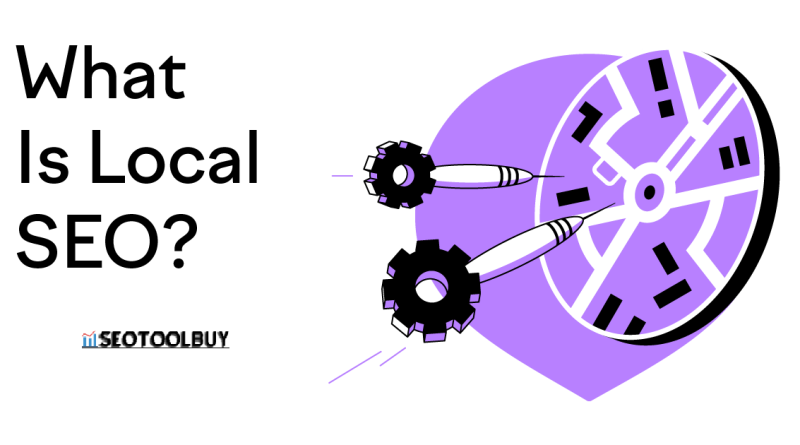
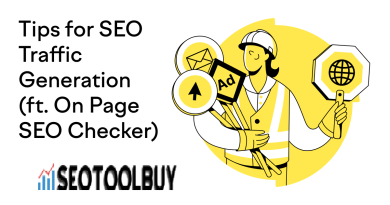


C
Hey! Someone in my Myspace group shared this website with us so I came to look it
over. I’m definitely loving the information. I’m
book-marking and will be tweeting this to my followers!
Fantastic blog and brilliant style and design.